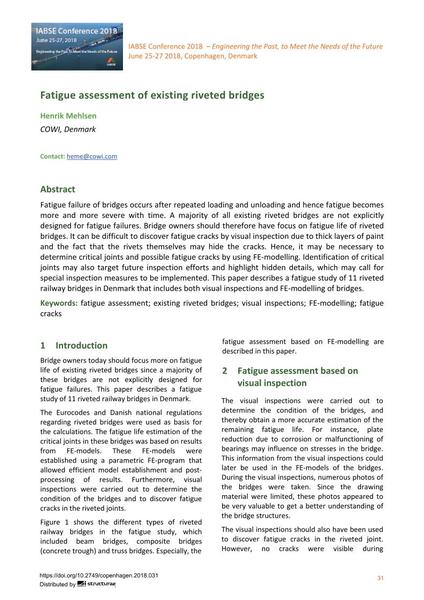| Médium: |
papier de conférence |
| Langue(s): |
anglais
|
| Conférence: |
IABSE Conference: Engineering the Past, to Meet the Needs of the Future, Copenhagen, Denmark, 25-27 June 2018 |
| Publié dans: |
IABSE Conference Copenhagen 2018 |
|
Page(s):
|
31-38
|
Nombre total de pages (du PDF): |
8 |
|
|
Page(s):
|
31-38
|
| Nombre total de pages (du PDF): |
8 |
| DOI: |
10.2749/copenhagen.2018.031 |
|
Abstrait:
|
Fatigue failure of bridges occurs after repeated loading and unloading and hence fatigue becomes more and more severe with time. A majority of all existing riveted bridges are not explicitly designed for fatigue failures. Bridge owners should therefore have focus on fatigue life of riveted bridges. It can be difficult to discover fatigue cracks by visual inspection due to thick layers of paint and the fact that the rivets themselves may hide the cracks. Hence, it may be necessary to determine critical joints and possible fatigue cracks by using FE-modelling. Identification of critical joints may also target future inspection efforts and highlight hidden details, which may call for special inspection measures to be implemented. This paper describes a fatigue study of 11 riveted railway bridges in Denmark that includes both visual inspections and FE-modelling of bridges.
|

